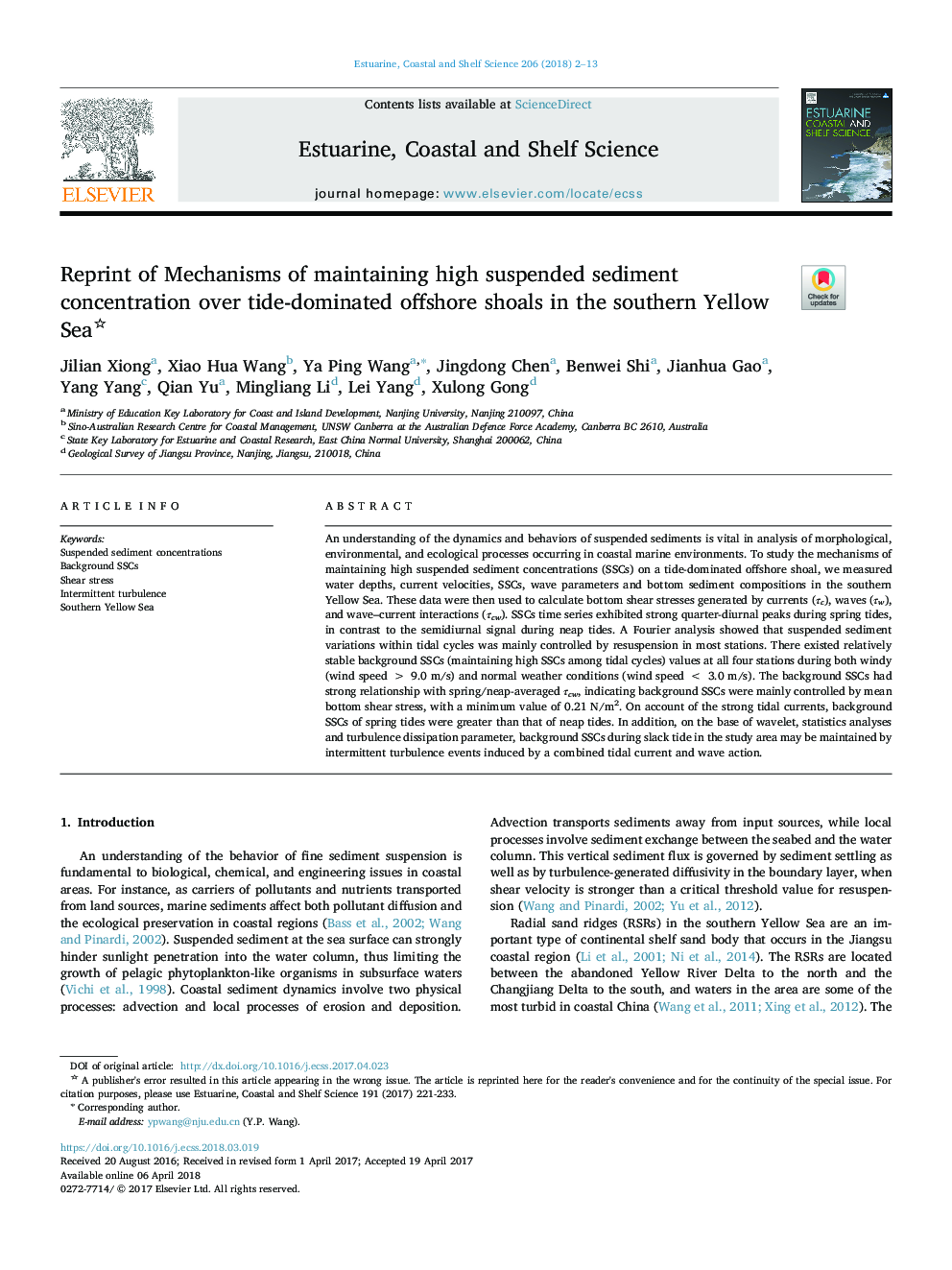| Article ID | Journal | Published Year | Pages | File Type |
|---|---|---|---|---|
| 8884827 | Estuarine, Coastal and Shelf Science | 2018 | 12 Pages |
Abstract
An understanding of the dynamics and behaviors of suspended sediments is vital in analysis of morphological, environmental, and ecological processes occurring in coastal marine environments. To study the mechanisms of maintaining high suspended sediment concentrations (SSCs) on a tide-dominated offshore shoal, we measured water depths, current velocities, SSCs, wave parameters and bottom sediment compositions in the southern Yellow Sea. These data were then used to calculate bottom shear stresses generated by currents (Ïc), waves (Ïw), and wave-current interactions (Ïcw). SSCs time series exhibited strong quarter-diurnal peaks during spring tides, in contrast to the semidiurnal signal during neap tides. A Fourier analysis showed that suspended sediment variations within tidal cycles was mainly controlled by resuspension in most stations. There existed relatively stable background SSCs (maintaining high SSCs among tidal cycles) values at all four stations during both windy (wind speed > 9.0 m/s) and normal weather conditions (wind speed < 3.0 m/s). The background SSCs had strong relationship with spring/neap-averaged Ïcw, indicating background SSCs were mainly controlled by mean bottom shear stress, with a minimum value of 0.21 N/m2. On account of the strong tidal currents, background SSCs of spring tides were greater than that of neap tides. In addition, on the base of wavelet, statistics analyses and turbulence dissipation parameter, background SSCs during slack tide in the study area may be maintained by intermittent turbulence events induced by a combined tidal current and wave action.
Related Topics
Physical Sciences and Engineering
Earth and Planetary Sciences
Geology
Authors
Jilian Xiong, Xiao Hua Wang, Ya Ping Wang, Jingdong Chen, Benwei Shi, Jianhua Gao, Yang Yang, Qian Yu, Mingliang Li, Lei Yang, Xulong Gong,
